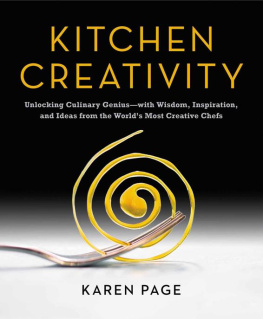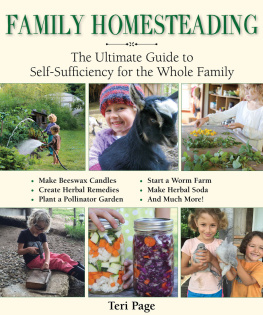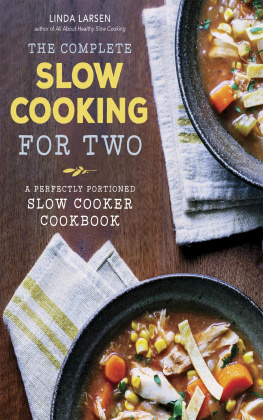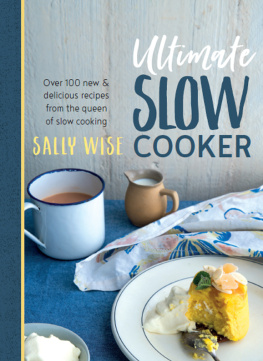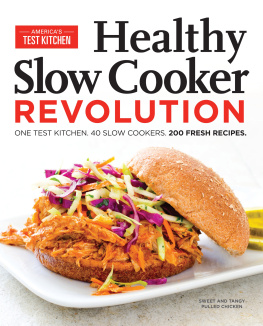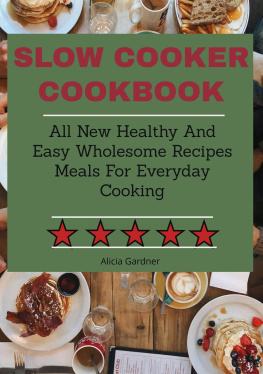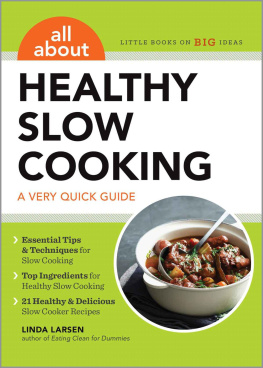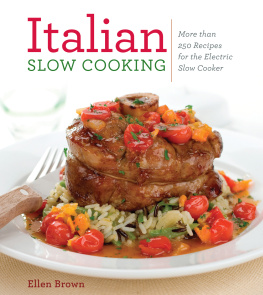My thanks to family and friends who participated with such enthusiasm in the many tasting sessions during the writing of the book.
Slow cookers are becoming ever more popular, and its no surprise. After witnessing years of fast food and lifestyles that are hectic beyond belief, this renewed interest in slow cooking is an understandable reaction. We yearn for the straightforwardness of our grandmothers (or indeed our great grandmothers) day, when slow cooking was a way of life and those who cooked knew how to make delicious meals out of very little. The food would be prepared in the morning and left to cook gently all day in the range beside the kitchen fire. By the time the family returned home in the evening, a delicious meal would be ready and waiting. Today, few of us have a cooking range but we can all be proud owners of a slow cooker and the advantages of this time-honoured method can still be appreciated.
So what is a slow cooker? Not somebody who cooks food slowly but an electrical appliance that is designed to cook gently and safely, unattended, for many hours without burning , boiling away or drying up. Slow cookers have different settings so you can cook, for example, on HIGH for a few hours or in time for lunch, or on LOW for several hours, all day or overnight.
What is it good at? Well, a slow cooker not only makes delicious soups, stews and casseroles. Its also good at cooking fish and delicate fruit and vegetables, all of which stay nice and whole, even after long cooking. Joints of meat and whole chicken can be roasted in a slow cooker with maximum retention of juices and minimum shrinkage. And by using the slow cooker as a water bath, you can prepare delicious pt and the lightest of sponges and puddings. Even mulled wine and hot punches can be made in (and served straight from) a slow cooker to make any party go with a swing.
Why Cook Slowly?
Food that has been cooked slowly tastes wonderfully mellow because the flavours have had time to blend and develop. A meat casserole that is cooked gently over a long period in moist heat becomes meltingly tender. In fact, slow cooking will tenderise even the toughest cuts of meat shin of beef, oxtail and neck of lamb are good examples and the resulting dish will be deliciously succulent.
Slow cooking, unlike microwaving and pressure cooking, is a relatively imprecise method and this turns out to be one of its greatest advantages, allowing flexible meal times for all the family. Most recipes give a minimum and a maximum cooking time to indicate the period of time at which the cooked dish is at its best. Even food that is left in the slow cooker for an hour longer than recommended will not spoil, and so can still be appreciated by hungry late-comers. Just think, no more frayed nerves when family or friends arrive late for a meal!
A slow cooker allows very little steam to escape during cooking and this has a number of benefits: the flavour of food is retained and the kitchen doesnt fill with cooking odours and steam; and water baths that would normally need topping up do not dry out.
A slow cooker can help reduce your food and fuel bills too. Nutritious meals can be cooked using inexpensive cuts of meat the sort that demand long slow cooking to make them tender. Using a slow cooker instead of an oven can save money too. A conventional oven has a large cavity to heat up, even to cook one casserole. Inevitably, it consumes more fuel than a slow cooker. All slow cookers use a tiny amount of power and so are very economical to run. Of course, savings will vary from model to model and on what is being cooked.
Remember too that a slow cooker heats the food inside it and not the whole kitchen (unlike a conventional oven can). On hot summer days, when the last thing we want is to spend time cooking in a hot kitchen, a slow cooker is ideal for dishes that are to be eaten hot as well as those that are to be cooled and eaten later pt, chilled soup, cold chicken or ham, crme caramel, pears in red wine, to name just some.
Lastly, rest assured that slow cookers are absolutely safe to leave cooking unattended all day or all night just as you leave the fridge or freezer running while you are out. As an added guarantee of safety, slow cookers are supplied with the assurance that they meet European safety standards.
Who Uses a Slow Cooker?
Ask people why they use a slow cooker and you will be given a number of different answers, depending upon their way of life.
One-person households and particularly those with limited cooking facilities. A student in a bed-sitter for example, with perhaps only a single cooking ring, can use a slow cooker to provide healthy meals economically, at flexible times and without the neighbours complaining about lingering cooking smells.
People out at work (and that means most of us) can return home weary at the end of the day to sit down to a delicious hot meal from the slow cooker. And if they are held up at work or delayed by traffic they can be sure that the slow cooker wont burn the food or switch itself off (unlike an oven set on automatic timer). Shift workers find the slow cooker invaluable too.
Parents with young or school-age children can prepare the family meal in the morning, leaving the morning or the rest of the day free for other activities. The slow cooker can be left to cook on HIGH for lunchtime eating or on LOW for the evening. If the children prefer to eat early, thats no problem the parents portions can be left on LOW until they sit down to eat at a later time. Meals really can be flexible so that older children with after-school interests no longer present difficulties and there is little danger of the food spoiling before the last one arrives home.
Retired people. Whether they are home during the day or out and about, the slow cooker leaves them free to pursue their interests.
Choosing a Slow Cooker
There is a wide range of electric slow cookers on the market today and you can be sure of finding one with a shape and capacity that fits in with your lifestyle. Here are some guidelines.
Lid
The lid is usually made of glass or earthenware. With a glass lid it is possible to see whats going on inside the cooker (though condensation on the inside of the lid often obscures the view). An earthenware lid that matches the pot can look more traditional, particularly when the pot is removed from its base for serving at the table.
The lid should fit loosely on to the pot sufficient to be able to slide it a short distance from side to side. It should however sit snugly without rocking (a lid that rocks could allow precious heat to escape from the pot). During cooking , condensation from the food gathers around the lip of the pot forming the important water seal between it and the lid (if the lid were to rock, this seal would be unlikely to form).
Pot
Slow cookers contain a cooking pot that is usually made of earthenware an excellent insulator of heat. The capacity varies from 1.5 litres (2 pints) to 3.5 litres (6 pints). Some are oval and some are round. Some pots are narrow and deep while others are wide and shallow. Pudding basins fit more easily into a deep pot but a shallow pot is better when cooking food like stuffed peppers, pears in red wine, or trout (and the larger the base, the more can be cooked at one time). Also think about the food you eat; meat, such as a leg of lamb or pork, or a large chicken, would fit best in an oval pot.
All slow cookers can be filled to within 2.5cm (1 inch) of the brim without danger of boiling over. Models with a capacity of about 2.5 litres (4 pints) are large enough for a family of four but are also suitable for cooking for one or two. Even a 1.3kg (3 lb) chicken can be cooked whole in this size. If you cook for four or more, cook for the freezer or entertain on a regular basis, I would recommend choosing a larger capacity.




